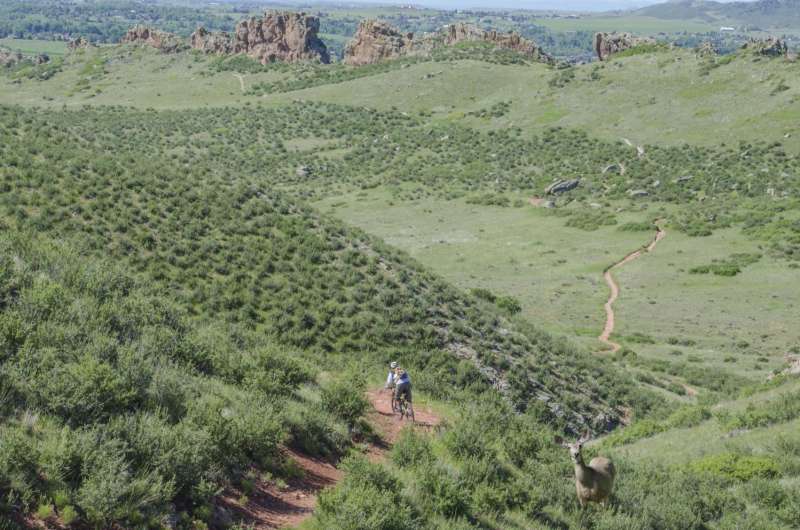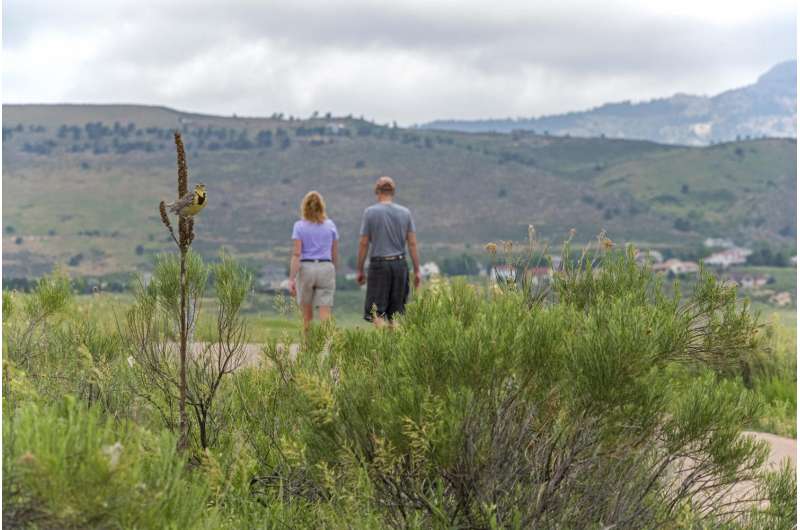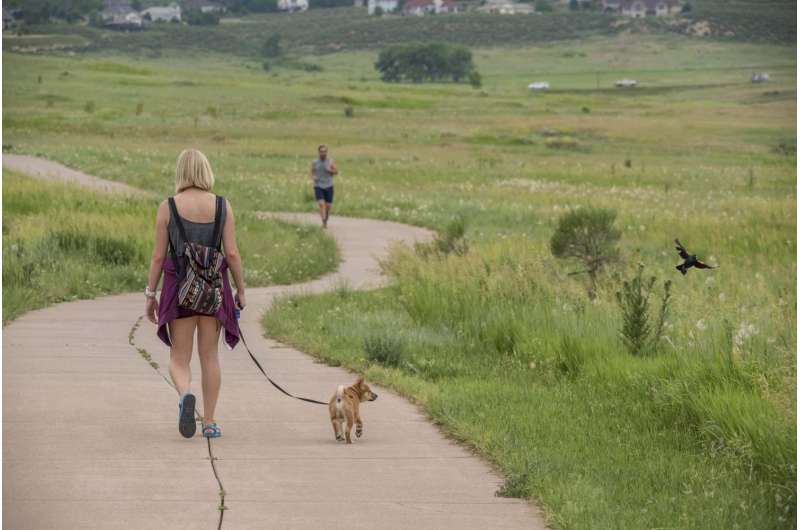Outdoor recreation in protected areas negatively impacts wildlife

It's a good thing to explore the great outdoors. But a new study led by Colorado State University and the Wildlife Conservation Society found that recreation activities in protected areas are impacting wildlife. More often than not, the impact appears in negative ways.
Hiking, a common form of outdoor recreation in protected areas, can create a negative impact by causing animals to flee, taking time away from feeding and expending valuable energy.
Nature-based, outdoor recreation is the most widespread human land use in protected areas and is permitted in more than 94 percent of parks and reserves globally. Inspiring an estimated 8 billion visits per year to these areas, outdoor recreation is assumed to be compatible with conservation. Increasingly, however, negative effects of recreation on wildlife are being reported.
Protected areas include national parks, wilderness areas, community conserved areas, nature reserves and privately-owned reserves.
"People generally assume that recreation activities are compatible with conservation goals for protected areas," said Courtney Larson, lead author of the study and a graduate student in CSU's Department of Fish, Wildlife, and Conservation Biology. "However, our review of the evidence across wildlife species and habitat types worldwide suggests otherwise."

The authors reviewed 274 scientific articles published between 1981 and 2015 on the effects of recreation on a variety of animal species across all geographic areas and recreational activities.
More than 93 percent of the articles reviewed indicated at least one impact of recreation on animals, the majority of which, or 59 percent, were negative.
Surprisingly, studies of hiking and other non-motorized activities found negative effects on wildlife more frequently than studies of motorized activities.
"These findings do not mean that everyone should hop on an ATV instead of going for a hike," Larson said. "Since motorized activities generally cover a larger area, their influence on animals can be more widespread. They can also result in other environmental impacts, such as soil loss and vegetation disturbance."
Researchers found the following negative impacts in the study:

- decreased species diversity
- decreased survival, reproduction, or abundance of species, and
- behavioral or physiological disturbance, such as decreased foraging or increased stress.
Negative effects were documented most frequently in the studies for reptiles, amphibians, and invertebrates.
Positive effects of recreation on wildlife were frequently observed on birds in the crow family and mammals in the rodent order. These effects included increased abundance and reduced flight responses.
"The harmful effects of recreation are a growing concern for land managers who must balance goals for recreation and conservation, as protected area visitation rates increase," said Sarah Reed, Wildlife Conservation Society associate conservation scientist and a study co-author. "Results of this study are critical to inform science-based solutions to avoid or mitigate those impacts."
"There is still much to know about the impacts of recreation on wildlife," said CSU Professor Kevin Crooks in the Department of Fish, Wildlife, and Conservation Biology, and also a co-author.
"We must start by simply acknowledging that recreation and conservation are not always compatible for all species, in all locations," he added. "It might be time to establish limits on public access to protected areas, and encourage changes in the behavior of recreationists, leading to improved conservation outcomes."
More information: Courtney L. Larson et al, Effects of Recreation on Animals Revealed as Widespread through a Global Systematic Review, PLOS ONE (2016). DOI: 10.1371/journal.pone.0167259
Journal information: PLoS ONE
Provided by Colorado State University

















